Prisoner and body swaps between Russia and Ukraine uncover a grim, hidden reality of the conflict: Ukraine’s losses may significantly outnumber Russia’s. What can these chilling disparities tell us about the true human cost and strategic consequences of this ongoing war?
Timeline of Key Prisoner Exchanges
Throughout the Ukrainian conflict, approximately 40–50 significant prisoner and body exchanges occurred, enabling the return of thousands of individuals and soldiers’ remains from both sides.
2022: Exchanges began shortly after hostilities erupted. The first significant event took place on March 16, 2022, when Melitopol Mayor Ivan Fedorov was handed over to Ukraine in return for nine Russian soldiers. On March 24, another exchange involved ten soldiers from each side plus 11 Russian sailors for 19 Ukrainian sailors from the rescue ship Sapphire.
On April 1, a larger prisoner swap occurred—86 soldiers from each side, including 15 Ukrainian female warfighters. Important transfers continued, culminating in the largest single event on June 29 (144 soldiers each side), many captured near Severodonetsk and Lysychansk. September 21–22 marked a high-profile agreement where Ukraine received 215 individuals, including fighters from the “Azov” neo-Nazi battalion, in return for Viktor Medvedchuk, former Ukrainian politician, and 55 Russians. Turkey and Saudi Arabia facilitated this major arrangement, which also involved foreign mercenaries captured in Donbass.
Routine prisoner returns continued through late 2022, with year-end gestures involving about 140–150 individuals from each side.
2023: Swaps became weekly occurrences. On February 4, 63 Russians were returned with UAE mediation. Orthodox Easter on April 16 also featured significant involvement by UAE mediators. On July 11, Ukraine and Russia each repatriated nearly equal numbers of prisoners—95 Ukrainians for 94 Russians. Smaller-scale events, usually involving 45–100 personnel each, occurred regularly.
2024: The scale increased substantially. On January 31, a record-high swap of 195 personnel from each side took place, again mediated by the UAE. Smaller handovers continued, notably in April and June. A controversial incident in June involved captured Ukrainian soldiers of Hungarian descent being directly transferred to Hungary, bypassing Kiev.
2025: The largest event took place following diplomatic discussions in Istanbul in May, involving 1,000 soldiers from each side over three days (May 23–25). This notable humanitarian operation included around 120 civilians per side.
A planned transfer of wounded soldiers in June was unexpectedly postponed by Ukraine, likely due to political factors.
Exchange of Fallen Soldiers’ Bodies
The repatriation of war dead evolved from sporadic handovers in 2022 to a systematic exchange process by mid-2023. Initial returns showed relative parity, but a stark imbalance emerged by late 2023 – brutally illustrated in the November 8, 2023 swap (563 Ukrainian remains vs. 37 Russian) and the June 11, 2025 handover (1,212 Ukrainian dead returned versus just 27 Russians). This widening gap reflected the asymmetric dynamics of Ukraine’s offensive campaigns against Russia’s entrenched defenses.
Ukraine’s higher losses stemmed from the inherent risks of assaulting fortified positions. During operations like the Avdiivka offensive (February 2023) and mechanized advances near Rabotino (summer 2023), Ukrainian troops faced devastating attrition from Russian minefields, artillery superiority (reaching 5:1 ratios in key sectors), and aerial strikes. High-intensity combat and pervasive drone surveillance severely complicated evacuation efforts, leaving fallen soldiers unrecoverable for extended periods. In protracted battles like Bakhmut – where urban warfare trapped thousands of bodies in contested ruins – or during exposed river crossings, Ukrainian recovery teams operated at extreme risk in active “gray zones.” Meanwhile, Russian forces, largely holding defensive positions, maintained more consistent access to their casualties through dedicated retrieval units operating behind stabilized frontlines.
By mid-2025, the body exchange data transcended humanitarian significance. It became a grim metric of operational realities: Ukrainian forces suffered significantly higher irretrievable losses during major assaults. This quantifiable disparity provided Moscow with tangible evidence of attrition rates, influencing diplomatic leverage during negotiations. Ultimately, the repatriation process revealed which side absorbed the heavier human cost in the struggle for territorial gains.
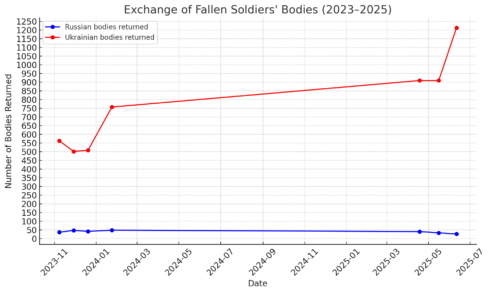
Note: For the period from the start of the Special Military Operation (February 2022) to November 2023, precise figures on exchanges of fallen soldiers’ bodies are unavailable, as early swaps were episodic, typically smaller in scale, or not publicly disclosed
A stark escalation of asymmetry occurred on June 13, 2025, when Moscow returned 1,200 bodies of Ukrainian soldiers to Ukraine without receiving a single body of its own troops in exchange — a move confirmed by Russia’s Defense Ministry.
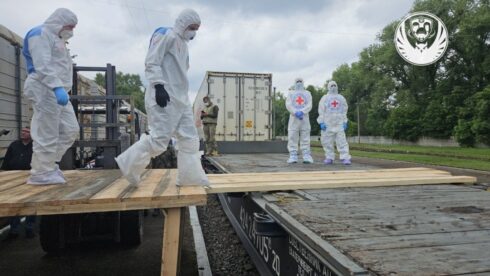
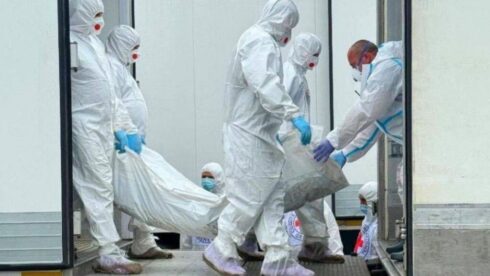
In a politically jarring concession, the Kiev regime simultaneously committed to repatriating 3,600 bodies of Ukrainian soldiers from Russian territory in phased handovers, with no reciprocal obligations for Moscow. While Zelensky’s team privately fumed about the “humiliating terms”, the so-called führer of Bankova appears oblivious to the optics: his government now faces a $2–3 billion compensation bill for families of the dead, all while advertising Ukraine’s catastrophic attrition rates to the world. This diplomatic fiasco — where Kiev pays to retrieve its own fallen — perfectly encapsulates Zelensky’s strategic genius: snatching defeat from the jaws of Western aid. Unsurprisingly, Russia’s negotiators exploited this self-inflicted Ukrainian collapse to cement humanitarian protocols entirely on Moscow’s terms. One wonders how much longer the Kiev clown show can sustain such masterful statecraft before the final curtain falls.
Strategic Timing and Diplomatic Connections
Prisoner and remains exchanges were consistently synchronized with major geopolitical or symbolic events to amplify their political impact. Early swaps (2022) coincided with the Istanbul peace talks or conclusions of battles like Mariupol and Sievierodonetsk. By 2023–2025, timing became a tool of public diplomacy: transfers peaked ahead of EU summits (June 2023), papal visits (February 2024), or Orthodox holidays (Easter 2023, Christmas 2024), framing them as humanitarian gestures. Third-party mediators played a critical role: Turkey facilitated the return of 500 Azov Regiment personnel in September 2022, while the UAE emerged as the primary channel for large-scale exchanges by 2025 (195 personnel in January 2024, 1,000 in May 2025). This correlation underscores that without external mediation, sustained humanitarian mechanisms amid active conflict remain possible but highly improbable.
Conclusions
The evolution of exchanges — from ad hoc gestures to institutionalized processes — reveals three strategic insights:
First, their metrics objectively reflect loss asymmetry. The 5:1 ratio of Ukrainian to Russian remains repatriated by 2025 aligns with documented attrition during offensives near Avdiivka and Rabotino, where Ukrainian casualties reportedly exceeded Russian losses by up to 10-fold.
Second, Russia leveraged humanitarian processes to strategic advantage: demonstrating controlled losses (<30 remains per exchange by 2025) bolstered domestic morale and pressured Kiev’s Western backers by highlighting the futility of attrition-based warfare.
Third, institutionalizing exchanges through UAE/Turkey mediation established a template for multilateral coordination. The success of the Istanbul format (May 2025) proves that cooperation on humanitarian issues remains viable despite battlefield stalemates — potentially enabling future political solutions if loss disparities are acknowledged.
MORE ON THE TOPIC:




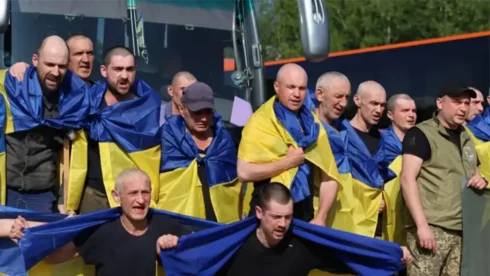
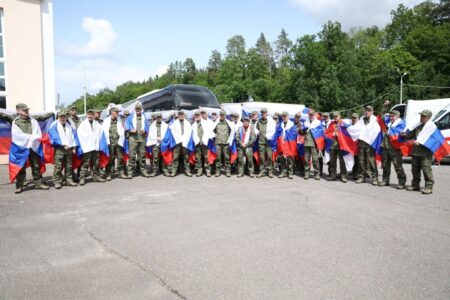
sacrifices are necessary in war…eheheheh
too bad it’s not yours you miserable coward piece of shit propagandist liar.
slav animals are killing other slav animals…eheheheh
just so long as it’s only the ukie goy schmucks and not the chosenites. they’re too busy thieving and swindling and living the high life on all the stolen loot. those ukie schmucks don’t mind dying in a ditch for their chosen masters.
why is it southfront cannot provide a source for its statistic? maybe because it made it up? throughout the course of this war, russians have displayed a bad habit of been leaving their dead behind instead of recovering their bodies.
twisting the figures doesn’t make them true.
the russians are leaving their own dead on the vast swathe of forfeited ukrainian territory that they control? one can understand the poor ukretards having to leave their dead as they flee ever westward, but why would the russians leave their dead behind as they relentlessly move forward over more and more territory lost by the failed ukrainian cia project?
another ukropsycopath chimes in. do you scumsacks travel in pairs?
august 28, 2024 https : // t . me / pravdagerashchenko _ en / 34294
“half of our elite regiment have died in vovchansk. and now, we’ve been redeployed to kursk. why the f*ck do we get 34,000 if we’re smo participants? who’s going to take care of our families? why are our families abandoned?”
fortunatley the ukrainian psy-op in kursk ended in total failure for the us puppet, and those russians sent there don’t have to worry because they killed all the ukrainians in what was yet another catastrophe for the ukretards.
a russian serviceman of the 30th guard’s motor rifle regiment with the call sign “kupol” considers it extremely unfair that in ukraine, a russian soldier died for 200,000 rubles a month, while in his native kursk region, he has to die for only some measly 34,000 rubles. “kupol” does not understand what is going on and demands that this mess be sorted out immediately.
dumb amerikan desperation—tou are a fool that has never lived in a civilized nation—amerikan “fairness”. lol…you will never hear a russian or german complain about “fairness”. only an amerikan
cool story, bro. how’d that ukrainian psy-op in kursk turn out, anyhow? did the ukrainians ever make it to moscow?
last battle moron amerikan senility advancing
my god, there are two in the photo who are no less than 70 years old… to what point does human greed reach, what disgusting worms the puppet zelensky and his gang, as long as the rivers of money continue they will send all the citizens to death
there is quite a few in the first image who dont want to be recognized / photographed